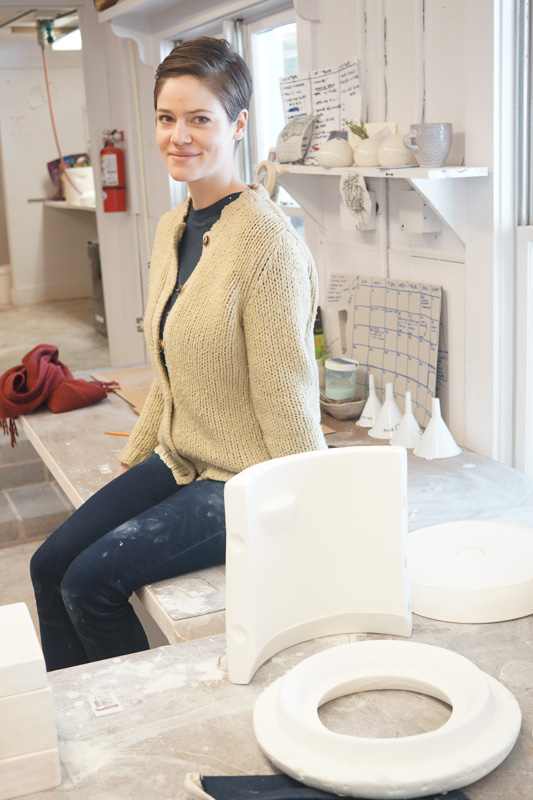
Core fellow Molly Kite Spadone was in Penland’s cool lower clay studio this winter, making, among many other things, large porcelain fermentation crocks. (Part of the crock’s mold is pictured with Molly at right.) The crocks have a long, tissue-thin wall that feels impossibly solid.
Molly pulls out a bucket of slip to show us how she starts–and what her winter process has been.
We stick our fingers in the tense and smooth liquid. The chatter in my mind immediately dims. Molly explains “deflocculating” from the slip caster’s lexicon: breaking down and dispersing clumping particles.
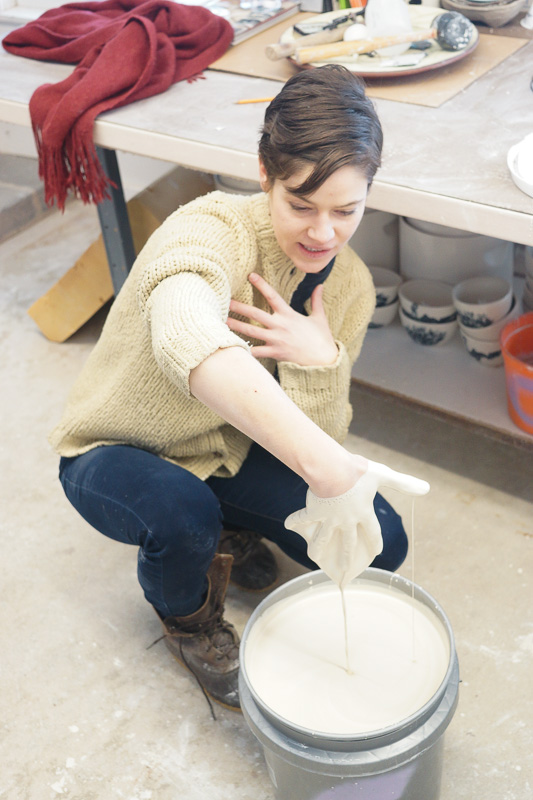
“Deflocculating” is the most beautiful word in the English language when you have your hand in a bucket of slip. Slip is the color of milky tea, air, maybe a gray rain cloud mixed in. I rinse my fingers off in the sink.
“You are making a membrane,” says Molly, explaining how she fills the mold with slip, hoping for a set form with no cracks.
All winter, Molly dealt with the rigors of membrane-making and the effects that duration can have in the process of slip casting. Under a light, she has spread the shards of broken membrane that she’ll reuse.
“I’ve been looking at the failures,” she says with a strange mix of affection and frustration as we tour the slip cemetery.
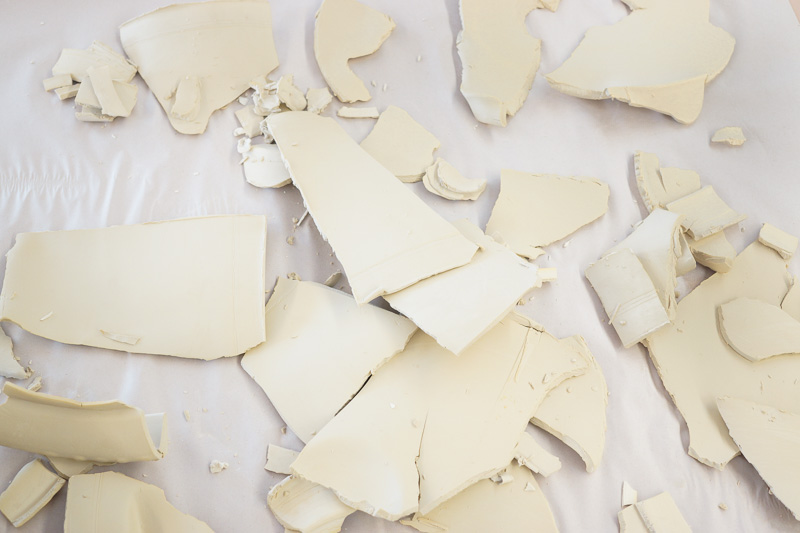
How does the hairline fracture start? Molly’s at home with this question–winter has given her time for it. It’s her last winter as a core fellow at Penland, and she’s getting ready to move back to her native Maine with just enough time to unpack before she makes her way back to Penland to assist in David Eichelberger’s spring clay workshop. [Ed. note: she’s back now, and David’s spring workshop has begun.]
“I have such a sweet taste in my mouth for this place,” she says, looking around her as we take a last look at one of the finished crocks. No cracks.
View more of Molly’s work in clay this winter–including the crocks, featuring newsprint transfers of drawings by Molly’s friend and collaborator, Kay Kelley–on Molly’s blog.
Photographs by Robin Dreyer; writing by Elaine Bleakney


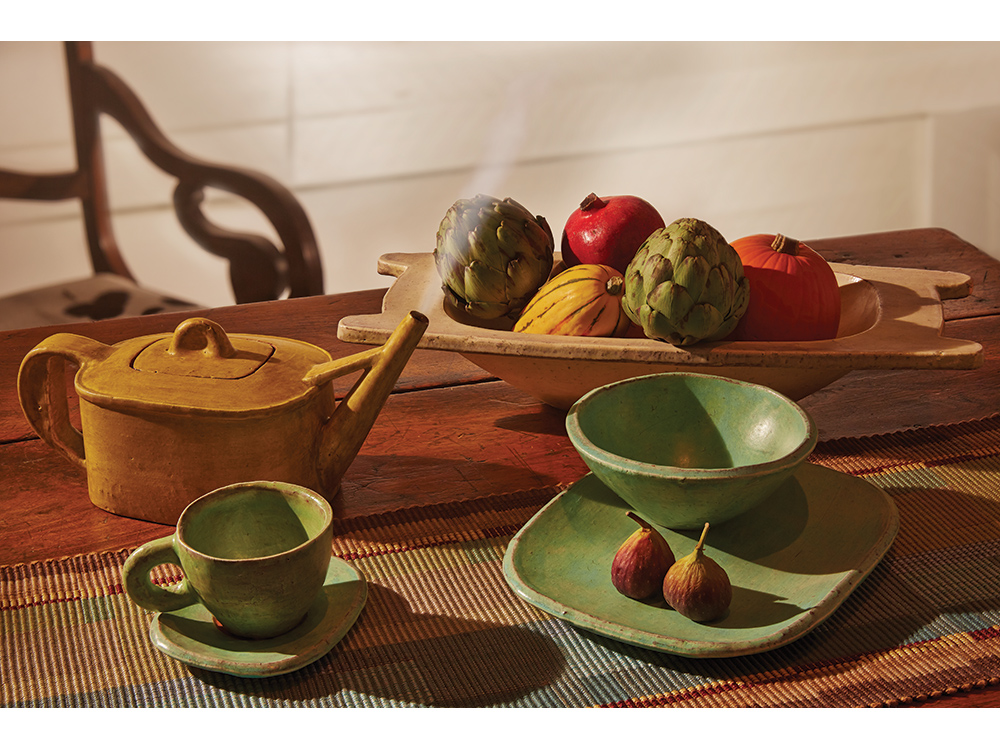
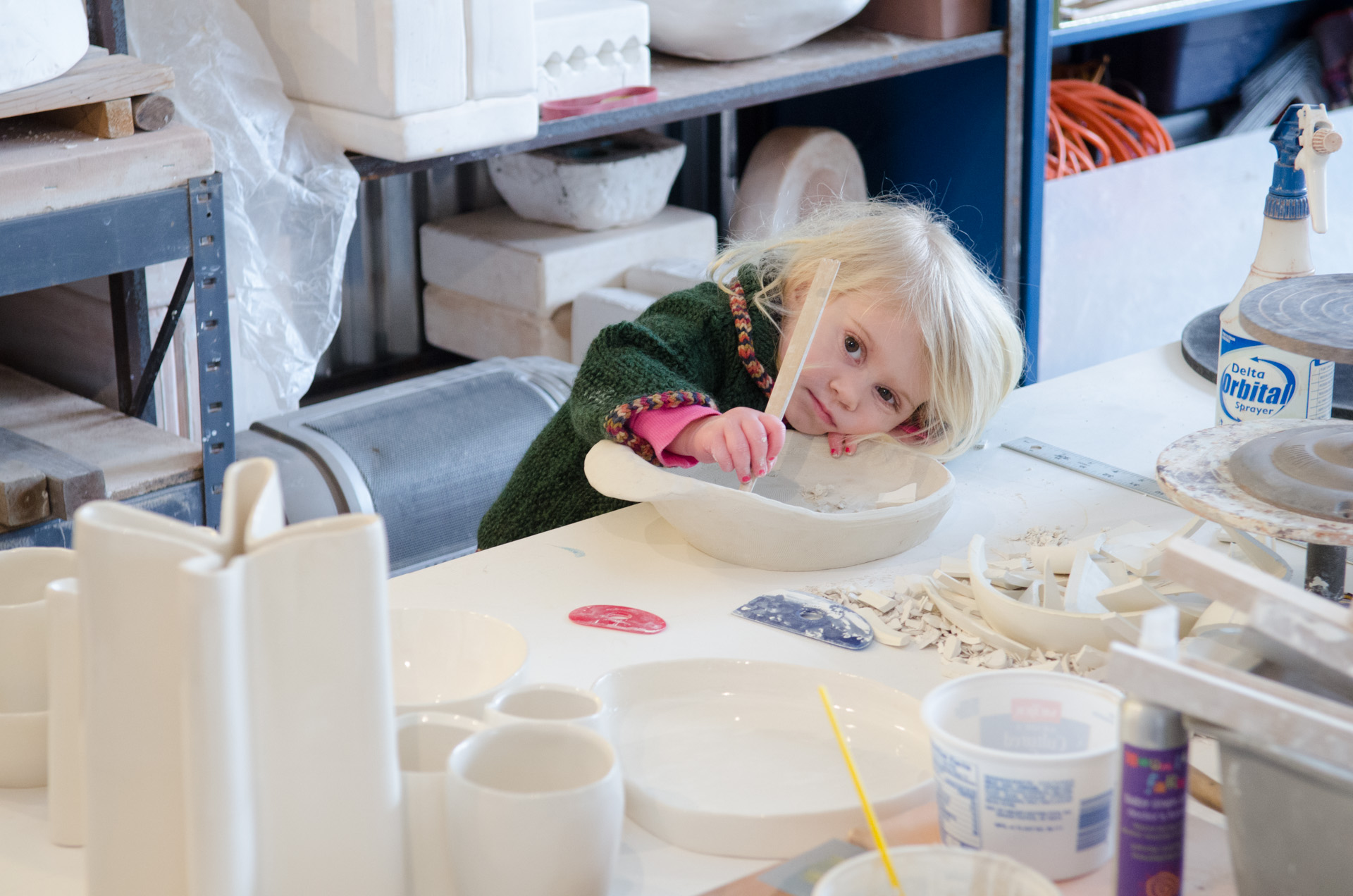
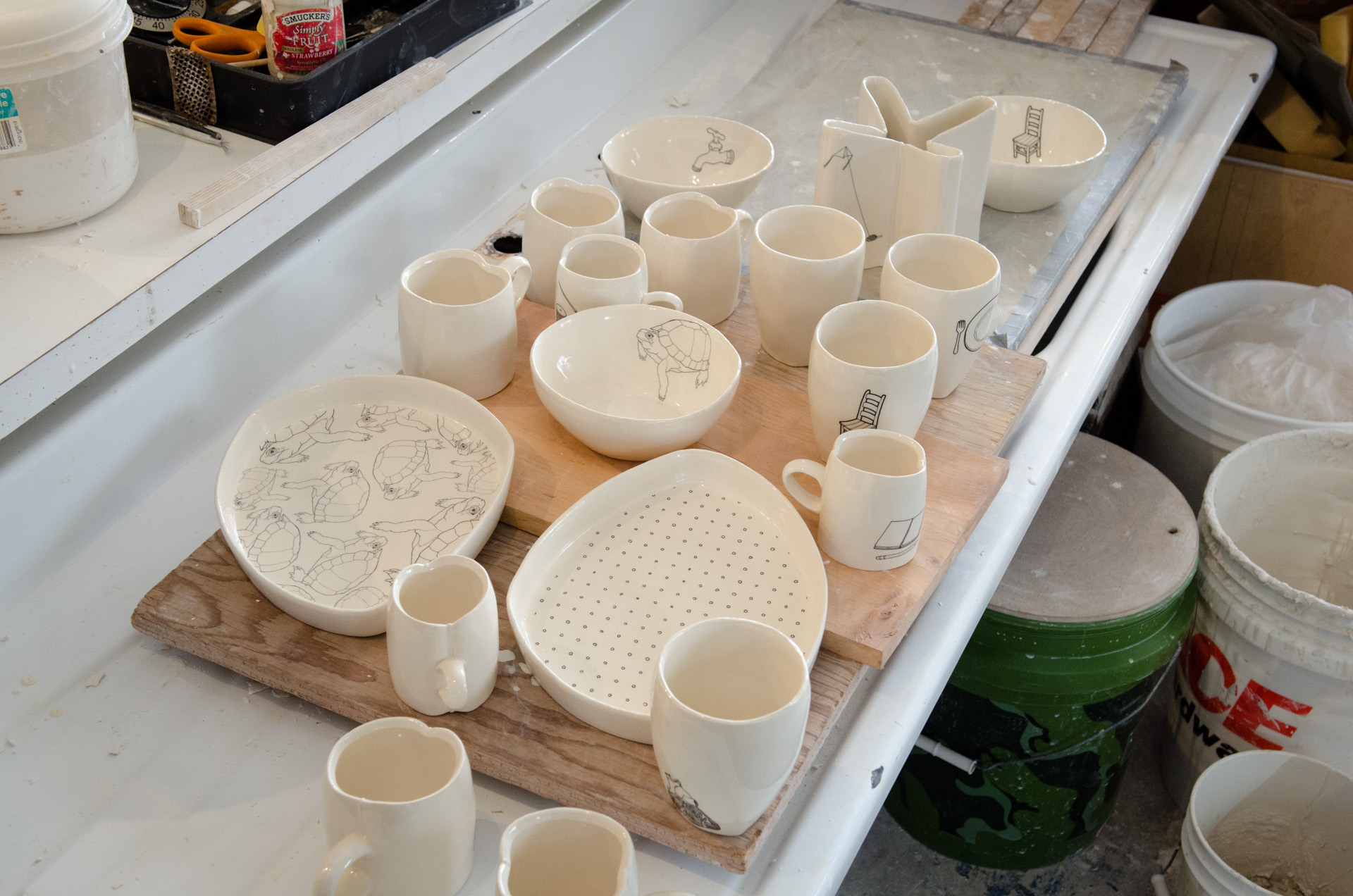
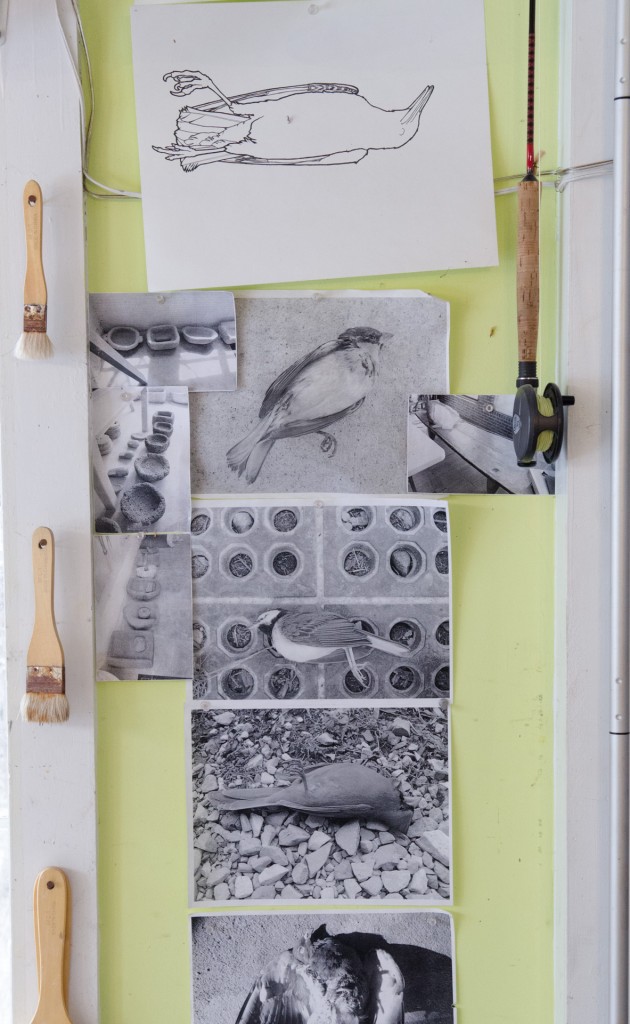 The resulting images on the vessels are casual and arresting: a fishhook, a frying pan. A turtle. A platter of turtles. Weird lures: a chair, a dead bird, an anatomically correct heart. “[The images] are everyday,” he says, “with a built-in plot. The user brings a story to it.” The drawings–the way they are drawn–evoke graphic novels, too. The objects feel removed from a panel, an “everyday” scene. Holding one of David’s cups, the image loses its primacy immediately to the feeling of the shape.
The resulting images on the vessels are casual and arresting: a fishhook, a frying pan. A turtle. A platter of turtles. Weird lures: a chair, a dead bird, an anatomically correct heart. “[The images] are everyday,” he says, “with a built-in plot. The user brings a story to it.” The drawings–the way they are drawn–evoke graphic novels, too. The objects feel removed from a panel, an “everyday” scene. Holding one of David’s cups, the image loses its primacy immediately to the feeling of the shape.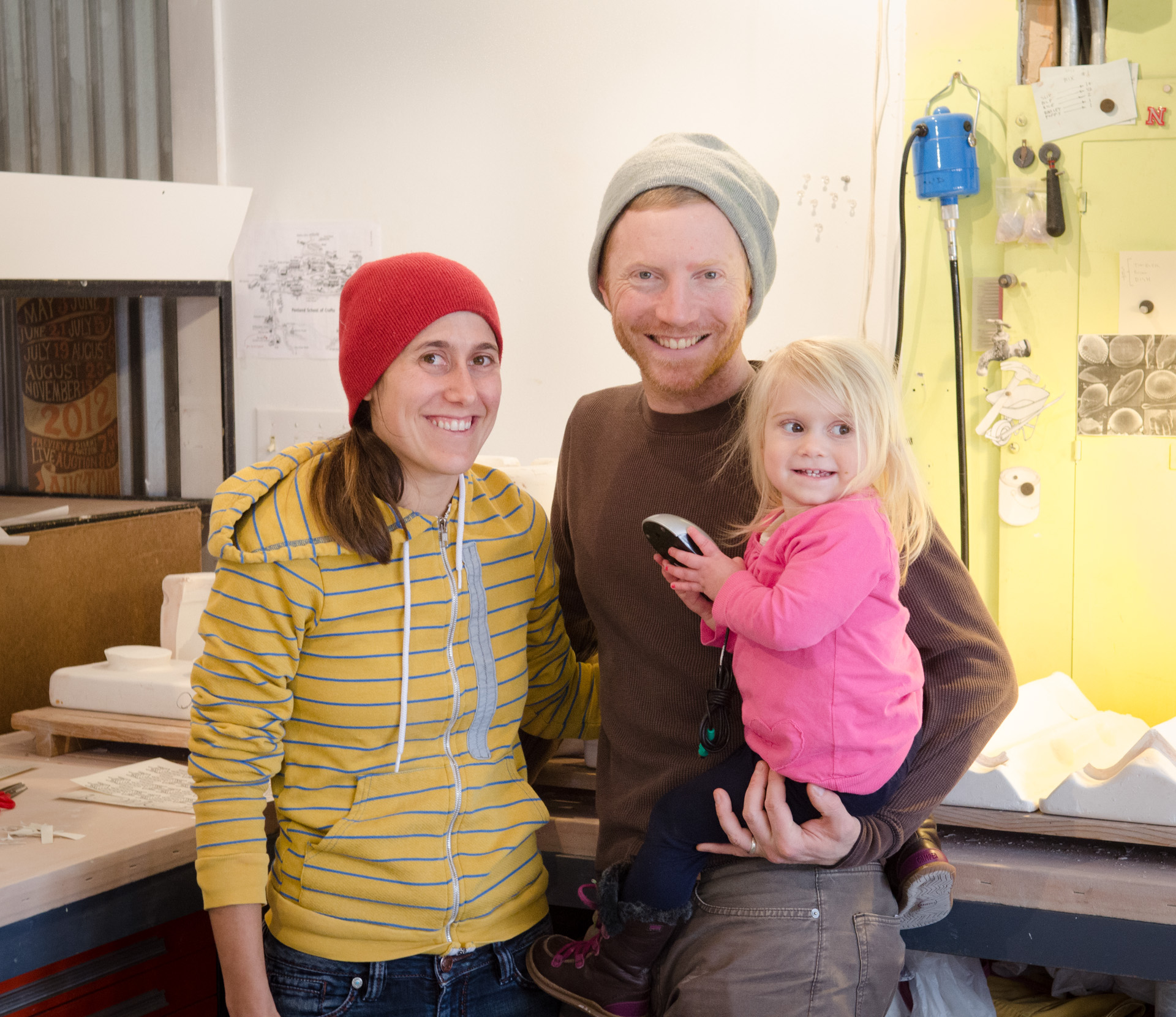 Both David and Elisa have worked a tricky balance the last three years: having a second child, creating their own work (David in residence, Elisa grabbing time in other studios), and working collaboratively on David’s pieces for the first time this winter. (“It’s Elisa’s turn next, David says, about the possibility of doing future residencies.) Their bread-and-butter studio collaboration will extend outward, too: David and Elisa plan to invite other clay artists, starting with Michael Klein, to make limited edition vessels with decals.
Both David and Elisa have worked a tricky balance the last three years: having a second child, creating their own work (David in residence, Elisa grabbing time in other studios), and working collaboratively on David’s pieces for the first time this winter. (“It’s Elisa’s turn next, David says, about the possibility of doing future residencies.) Their bread-and-butter studio collaboration will extend outward, too: David and Elisa plan to invite other clay artists, starting with Michael Klein, to make limited edition vessels with decals.